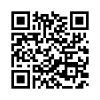REPRESENTASI GENDER DALAM BUKU TEKS BIPA
Downloads
(Title: Gender Representation in The BIPA Textbook). This article aims to describe the gender representation in the Indonesian language for foreign speakers (BIPA) textbook. The method used in this research is descriptive qualitative. The data were textual words and pictures that showing gender identity. Data were collected from BIPA textbook called Let's Speak Indonesian: Ayo Berbahasa Indonesia 1, which is well known as Ayo 1. Data gathered by reading the textbook, marking, classifying, and calculating gender identity markers. By using gender identity as the parameter, data were analyzed by reducing, presenting, calculating the percentage of gender identity representations, interpreting and explaining the representation of the gender. The findings revealed that the representation of female gender in the Ayo 1 textbook has a greater percentage than male gender where female's identities are more highlighted than male identities. Thus, it is concluded that based on the percentage of visual gender, the Ayo 1 textbook represented the gender equality because it's reflects less domination of male over female. This empirical evidence suggests that future BIPA textbook designers need to be aware of the importance of gender representation issues in developing BIPA textbook.
Keywords: BIPA textbook, gender identity, gender representation
Downloads
Agni, Z. A., Setyaningsih, E., & Sarosa, T. (2020). Examining gender representation in an Indonesian EFL textbook. Register Journal, 13(1), 183-207.
Al-Qatawneh, S., & Al Rawashdeh, A. (2019). Gender representation in the Arabic language textbook for the ninth grade approved by the Ministry of Education for use in schools in the United Arab Emirates (UAE). Studies in Educational Evaluation, 60, 90-98.
Arfiandhani, P. (2019). Gender Representation in English as A Foreign Language (EFL) Textbooks for Senior High School in Indonesia. Prominent, 2(1).
Ariyanto, S. (2018). A portrait of gender bias in the prescribed Indonesian ELT textbook for junior high school students. Sexuality & culture, 22(4), 1054-1076.
Baghdadi, M., & Rezaei, A. (2015). Gender representation in English and Arabic foreign language textbooks in Iran: A comparative approach. Journal of International Women's Studies, 16 (3), 16-32.
Bahman, M., & Rahimi, A. (2010). Gender representation in EFL materials: An analysis of English textbooks of Iranian high schools. Procedia-Social and Behavioral Sciences, 9, 273–277.
Calvert, A. (2014). You are what you (m) eat: Explorations of meat-eating, masculinity and masquerade. Journal of International Women's Studies, 16(1), 18–33.
Elmiana, D. S. (2019). Pedagogical representation of visual images in EFL textbooks: a multimodal perspective. Pedagogy, Culture & Society, 27(4), 613-628.
Fahriany, F., Alek, A., & Wekke, I. S. (2019). Gender Representation in English Textbooks for Islamic Junior High School Students. Kafaah: Journal of Gender Studies, 8(2), 149-168.
Foroutan, Y. (2012). Gender representation in school textbooks in Iran: The place of languages. Current Sociology, 60(6), 771-787.
Hamidah, S.C. (2015). Representasi Ideologi Gender dalam Buku Teks Bahasa Indonesia. Disertasi dan tesis Program Pascasarjana UM.
Jannati, S. (2015). Gender representation in EFL textbooks: A case of ILI pre-intermediate series. Journal of Applied Linguistics and Language Research, 2(3), 211-222.
Keplinger, A., Kowal, J., & Mäkií¶, J. (2016). Gender and organizational citizenship behavior of information technology users in Poland and Germany. In Proceedings of the Twenty-second Americas Conference on Information Systems (AMCIS), San Diego, California, USA.
Lakoff, R. (2003). Language, gender, and politics: Putting "women" and "power" in the same sentence. The Handbook of Language and Gender, 160–178.
Latupono, R.M & Susanto, G. (2019). Representasi Gender dalam Buku Ajar BIPA Sahabatku Indonesia Tingkat Mahir. Jurnal Kajian Bahasa, Sastra Indonesia, dan Pembelajarannya, 3(1).
Lee, J. F.(2019). In the pursuit of a gender-equal society: do Japanese EFL textbooks play a role? Journal of Gender Studies, 28(2), 204-217.
Lestariyana, R. P. D., Widodo, H. P., & Sulistiyo, U. (2020). Female Repre-sentation in Government-Mandated English Language Textbooks Used in Indonesian Junior High Schools. Sexuality & Culture, 24(4).
Liu, J. (2013). Visual Images Interpretive Strategies in Multimodal Texts. Journal of Language Teaching and Research, 4(6).
Miles, M. B., & Huberman, A. M. (1994). Qualitative data analysis: An expanded sourcebook. Sage.
Rafferty, Ellen, Barnard, Erlin, & Suharni, Lucy. (2014). Let's Speak Indonesian: Ayo Berbahasa Indonesia 1. Nus Press Singapore.
Setyono, B. (2018). The portrayal of women in nationally-endorsed English as a foreign language (EFL) textbooks for senior high school students in Indonesia. Sexuality and Culture, 22, 1077–1093.
Sulaimani, A., & Elyas, T. (2018). A glocalized or globalized edition? Contextualizing gender representation in EFL textbooks in Saudi Arabia: A critical discourse analysis perspective. In Conceptual Shifts and Contextualized Practices in Education for Glocal Interaction (p. 55-76). Springer, Singapore.
Susanto, G., Suparmi & Yulia Rahayu, E. (2020). The Emotional Geography of International Students in Online Bahasa Indonesia Learning during the COVID-19 Pandemic. Journal of International Students, 10(S3), 161–179.
The authors who publish this journal agree to the following requirements. The author retains the copyright regarding the work being simultaneously licensed below Creative Commons Attribution ShareAlike License.

Jurnal Diksi by Faculty of Languages, Arts, and Culture, Universitas Negeri Yogyakarta is licensed under a Creative Commons Attribution-ShareAlike 4.0 International License.
Based on a work at http://journal.uny.ac.id/index.php/diksi




















